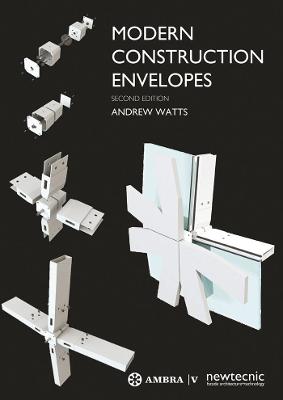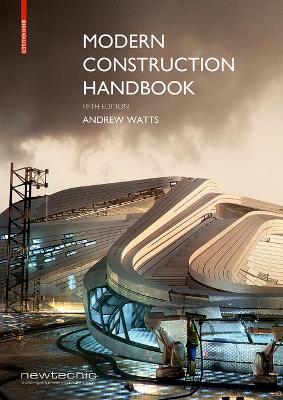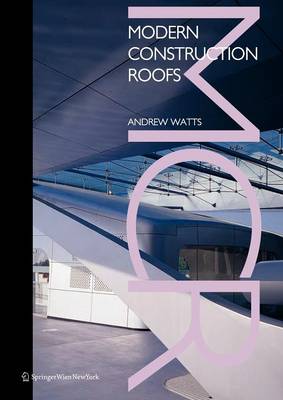Modern Construction
6 total works
The second edition of Modern Construction Envelopes was originally based on the two books by Andrew Watts, Modern Construction Roofs and Modern Construction Facades . Both volumes were gathered into one single volume and consolidated in terms of content, which permits the consideration of facades and roofs as envelopes. Using current examples by renowned architects, Watts presents the constructive and material-related details. This presentation is based on a text, photos, and standardized detail drawings, as well as 3D representations of the components. The new edition has 3D views that are easier to understand than the first edition, with sharper images and more key explanations.
Owing to regular revision, the Modern Construction Handbook has become a classic in advanced building construction literature, not least because of its clear structure covering the chapters "Material", "Wall", "Roof", "Structure", "Environment", and "Applications".
For the fifth edition, a large part of the 3D presentations has been redrawn, all six chapters have been revised and updated.
New standards have been established for this handbook, which is a basic resource for many architectural study courses, by adding more component details, new examples with a focus on sustainability and energy consumption, and a major update on finite element analysis (FEA) and computational fluid dynamics (CFD).
For the fifth edition, a large part of the 3D presentations has been redrawn, all six chapters have been revised and updated.
New standards have been established for this handbook, which is a basic resource for many architectural study courses, by adding more component details, new examples with a focus on sustainability and energy consumption, and a major update on finite element analysis (FEA) and computational fluid dynamics (CFD).
The Roofs Handbook is a textbook for practitioners of architecture, as well as for structural and environmental engineers who wish to broaden their study. The six chapters examine roofs from the standpoint of the primary material used in their construction, from metal, glass, and concrete to timber, plastics and fabrics. Each set of three double page spreads explains a specific form of construction which is accompanied by drawn and annotated details. Throughout the book, built examples by high profile designers are used to illustrate specific principles. As it is the case in the Modern Construction Handbook the techniques described can be applied internationally.
"The Roofs Handbook" is a textbook for practitioners of architecture, as well as for structural and environmental engineers who wish to broaden their study. The six chapters examine roofs from the standpoint of the primary material used in their construction, from metal, glass, and concrete to timber, plastics and fabrics. Each set of three double page spreads explains a specific form of construction which is accompanied by drawn and annotated details. Throughout the book, built examples by high profile designers are used to illustrate specific principles. As it is the case in the "Modern Construction Handbook" the techniques described can be applied internationally.
The Facades Handbook is a textbook for practitioners of architecture, as well as structural and environmental engineers who wish to broaden their study beyond the information provided in the Walls chapter of the Modern Construction Handbook. The six chapters examine facades from the standpoint of the primary material used in their construction, from metal to glass, concrete, masonry, plastics and timber. Each set of three double page spreads explains a specific form of construction which is accompanied by drawn and annotated details. Throughout the book, built examples by high profile designers are used to illustrate specific principles. As is the case in the Modern Construction Handbook, the techniques described can be applied internationally.
The Facades Handbook is a textbook for practitioners of architecture, as well as structural and environmental engineers who wish to broaden their study beyond the information provided in the "Walls" chapter of the Modern Construction Handbook. The six chapters examine facades from the standpoint of the primary material used in their construction, from metal to glass, concrete, masonry, plastics and timber. Each set of three double page spreads explains a specific form of construction which is accompanied by drawn and annotated details. Throughout the book, built examples by high profile designers are used to illustrate specific principles. As is the case in the Modern Construction Handbook, the techniques described can be applied internationally.




